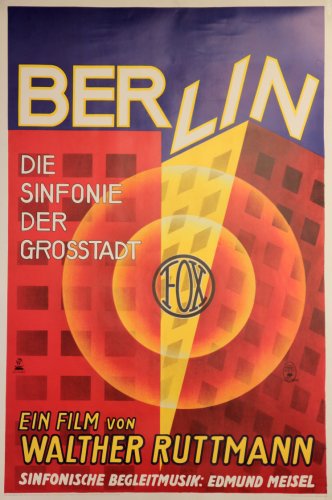

Place: Berlin. Span: one day in the life of the city circa 1927 captured by the camera.
Ruttman offers a necessary counterpoint to Vertov, where instead of the city becoming dissolved in the kino-eye, Ruttman offers a more kaleidoscopic view of the city, instead of city as a tool of ideological expression (which, too is unprecedented by all means). His vision is closer to Atget, with multiple references to him too.
This documentary has much to answer for, since it started a trend for city-based films: in its case, being a non-narrative look at the thriving German metropolis (though there were a number made in that vein), the original impact has essentially faded with imitation – and its place in the cinematic pantheon overtaken by such classic dramas of 'ordinary people' as F.W.
It's like Koyaanisqatsi of 20s! It's miraculous!
"Berlin: Die Sinfonie der Grosstadt" or "Berlin: Symphony of a Great City" is not only evidence of the fact that "Großstadt" was once written with 2 s, but it is also a black-and-white silent film documentary about Germany's capital. This one is from almost 90 years ago, so it includes recordings exclusively from before the 2 wars.
Contrary to what some others have observed, I don't find this experimental film tedious at all. Certainly, it is priceless as documentation of the fabled Weimar era of this great city — a city that barely existed at all a couple of decades later.
Priceless footage of the German capital shortly before the Nazi takeover. A watchable time capsule on a city on the verge of the abyss.
This fascinating classic never loses its ability to capture the attention and stimulate the imagination of its viewers. The technique is creative and resourceful, the photography is beautiful, and the images are memorable.
"Berlin: Symphony of a Great City" is an art film that is pretty dull. However, it certainly does have a lot of historical importance.